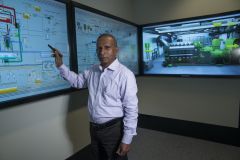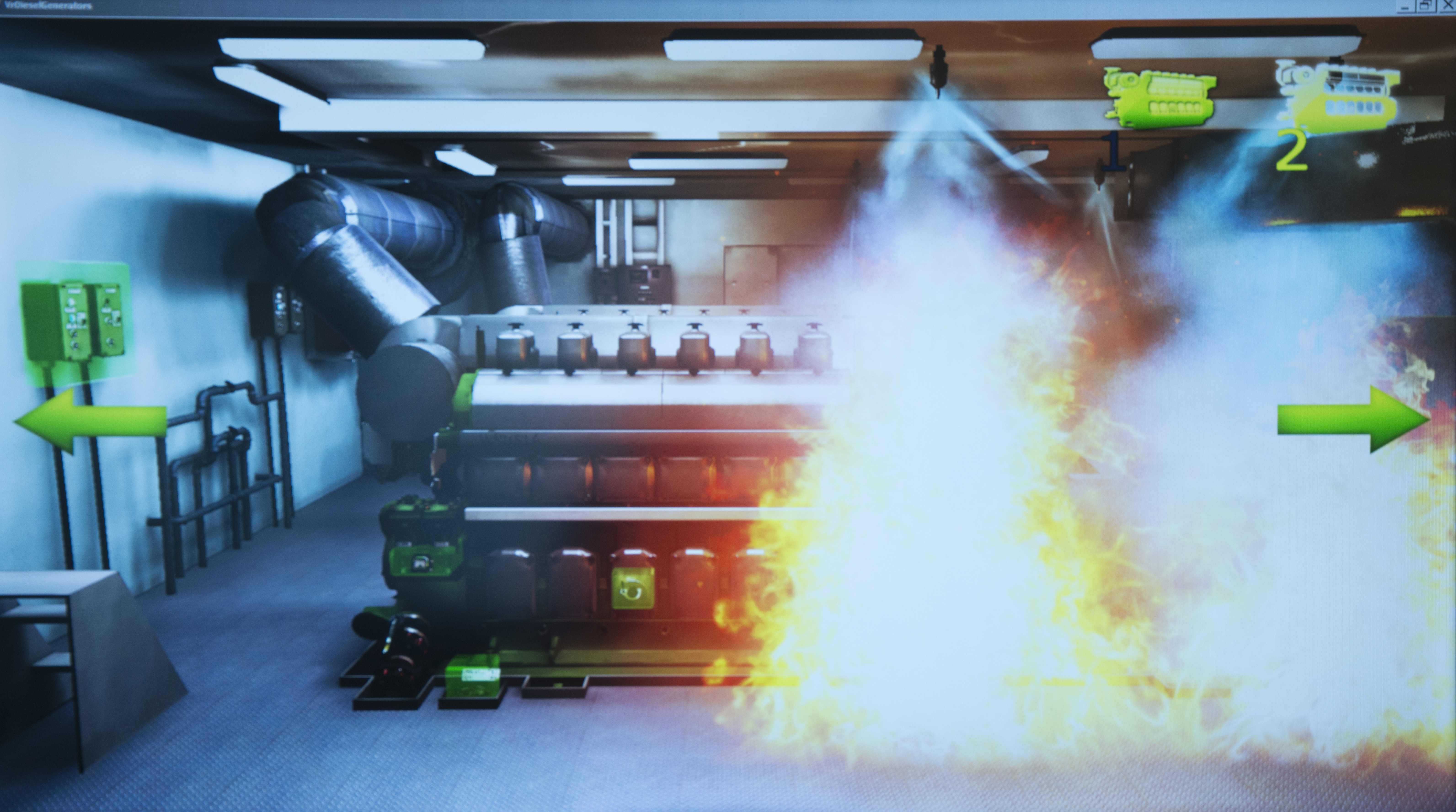
Following the completion of a multi-million-dollar upgrade, students can now avail of the latest in 3D simulation technology to master engine room operations.
Thanks to a new Kongsberg ‘K-Sim’ system, AMC’s engine room simulation facilities are now among the most advanced in the world, with virtual reality screens that immerse students in training for day-to-day and emergency situations on a range of diesel and electric propulsion ship engines.
The facility is now a powerfully immersive tool for training students and industry professionals on basic engine room operations, emergency operations and troubleshooting, optimal operation, fuel economy and advanced engine monitoring.
More realistic simulated training experiences can lead to more successful outcomes and AMC’s chosen Kongsberg model offers the most powerful virtual reality system in the world. 65-inch screens display a range of systems and scenarios in 3D—including emergency situations such as fires.
The new facility can train up to 16 students at individual work stations and offers an engine control room and simulated CCTV functionality for monitoring funnel emissions, main engines and generators.
Students have already enthused about their experience in the simulator, with a group of students from the United Arab Emirates writing:
“The simulator experience…was like a real experience of an engine room. We can truly say that this subject has helped us to have a greater understanding of how the engine room operates… and what we have learnt will surely impact our careers.”
Gamini Lokuketagoda, who leads AMC’s simulated training in the engine room, explains how the investment in the facility will benefit students for years to come.
“AMC’s undergraduate students, as well as maritime industry professionals, will now be able to take advantage of some of the most capable engine simulation facilities in the Southern Hemisphere.
“The 3D display is incredibly immersive and—I speak from experience—is as close as you can get to being on a real ship.
“I’m convinced that such a realistic experience means that AMC will be one of the best places in the world to prepare students for working with real engine rooms.”

A simulated engine room fire.
Underwater robotics research lab completion
Construction has finished on a research lab that’s set to position Tasmania as a world leader in underwater robotic technologies.
The $750,000 Autonomous Underwater Vehicle (AUV) facility has been built to house a fleet of underwater robots as well as workshop and office space for the five-strong AUV team based at AMC.
Launceston firm Artas Architects took what was a simple storage area and converted it into a contemporary research facility—with the additional challenge of needing to accommodate a new polar AUV, measuring 8m x 3m and weighing two tonnes.
This new AUV, co-funded by AMC and the Antarctic Gateway Partnership, is set to arrive in Tasmania in 2017 and will join two existing AUVs in the new facility.

AUV facility co-ordinator, Peter King, in the newly constructed facility.
Published on: 29 Nov 2016
